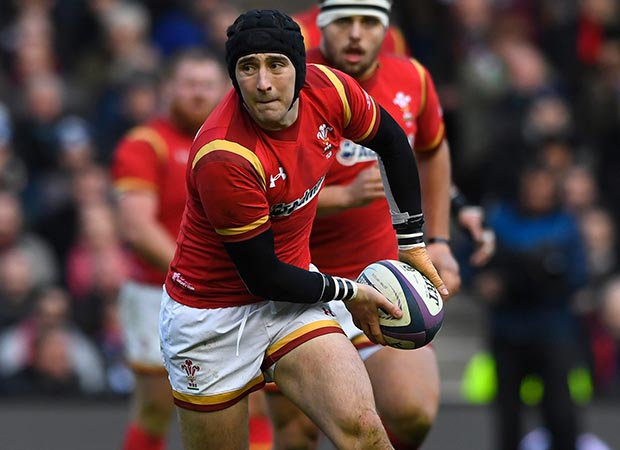
If there’s one team-based sport where being big and strong is worth all the marbles, it’s rugby. Players need all the bulk and strength they can gather to ram into other huge players, bursting through aggressive tackles and breaking enemy defenses.
Besides clever strategy and tons of practice, rugby players also need to be immensely powerful to execute their skills on the pitch. But, how do they build this massive size up? Well, for many pros, the answer is powerlifting.
Powerlifting exercises not only enhance muscle and strength but also your balance and stability. All of these areas are pivotal to a rugby player’s success, making it a worthwhile training venture for beginners and advanced athletes alike.
Let’s take an in-depth look at some of the key benefits of powerlifting for rugby players.
1. Strength Gains
Let’s get the most obvious benefit out of the way — strength gains. The more powerful you are as a rugby player, the easier it is to tackle, scrummage, and physically dominate your opponents.
Powerlifting mainly focuses on compound movements like the deadlift, squat, and bench press. Each of these exercises engages more than one muscle group at the same time.
Provided that you train close to failure on each set, eat well, and rest enough, you will achieve hypertrophy and put on some extra muscle.
2. Makes You Faster (in Many Ways)
Strength means nothing in a rugby match if you’re not fast. Luckily, powerlifting addresses that too. It boosts your sprinting speed by growing leg muscles, enhancing stride length, and building functional strength. Here’s a deeper look into these speed gains.
- Leg Muscle Growth
Deadlifts and squats engage mostly your lower body muscles like the hamstrings, quads, and glutes. Developing these muscles allows you to generate much more power as you push off the ground during sprints, increasing your running speed.
Since the nature of the concentric phase of powerlifting reps is explosive, your stride should also become more rapid and forceful.
- Optimized Sprinting Mechanics
Compound exercises like the squat don’t just demand raw strength, but also proper posture, coordination, and body mechanics. The more you squat, the more you develop these qualities, which play a significant role in your sprinting. By achieving more effective biomechanical performance, you should be able to maximize your speed and maintain proper form at all times.
- Mental Toughness
Powerlifting is no child’s play. As much as it is physical, it also requires and develops mental toughness. It requires discipline, focus, and the willpower to outperform yourself in each session. Making that a constant part of your routine develops lots of mental resilience, which works wonders on the field as it allows you to handle your nerves in all situations.
- Functional Strength
Powerlifting movements strengthen your body in a way that makes your real-life movements easier. This is called building “functional strength”, and it’s invaluable for rugby players. That’s because the sport involves dynamic movements like running through defenses, tugging, pushing, and even ramming into others.
- Greater Stride Length
The longer your stride length, the fewer steps you need to run before getting from point A to point B. This means increasing it would make you faster.
Powerlifting offers this key benefit to rugby players as well. It can contribute to increased hip mobility and flexibility after regularly exercising with a full range of motion. This means players can cover more ground with each step, bumping their overall speed up a notch.
3. Helps Prevent Dangerous Injuries
Powerlifting breaks and rebuilds your muscle fibers, as well as the connective tissue and tendons attached to your joints. These strength gains will not only make you more powerful but also less susceptible to injury.
Rugby is one of the deadliest sports out there when it comes to injury rates. That’s because every game is filled with sudden direction changes and heavy-duty collisions. With each player being built like an absolute unit, these collisions can lead to serious injuries.
Aside from your protective gear, your only line of defense against these injury risks is a well-rounded strength-training regimen.
But with that said, powerlifting has its fair share of injury risks. Make sure you exercise with proper form and don’t try anything new without guidance from an experienced trainer. For starters, lifters recommend using wraps and belts for deadlifts and squats to avoid lower back problems and wrist injuries.
4. Develop Fast-Twitch Muscle Fibers
Since the nature of powerlifting involves getting weights up in an explosive manner, your fast-twitch muscle fibers get challenged and developed with each session. This is especially useful since you need similarly explosive strength on the field in situations like a clutch run or a forceful tackle.
5. Enhances Core Strength
Unlike isolated bodybuilding exercises like a bicep curl, powerlifting gets your entire body involved. Whether you’re doing a squat, a deadlift, or a bench press, you’ll always have to brace and engage your core properly for each movement.
The squats and deadlifts especially engage and develop your core muscles. These highly contribute to boosting your stability and balance, allowing you to pump out more power from your body’s center of gravity. It might not sound like much, but it’s invaluable for a rugby player trying to resist rams and pushes from an aggressive enemy attack.
Conclusion
Powerlifting offers rugby players an on-point formula for success. The focus on compound movements, explosive strength, and overall athleticism can significantly elevate performance on the field. From enhanced strength and speed to injury resilience, powerlifting proves to be a valuable asset. When integrated wisely alongside position-specific training, it becomes a game-changer, propelling rugby players to new heights of strength and agility.






















You must be logged in to post a comment Login